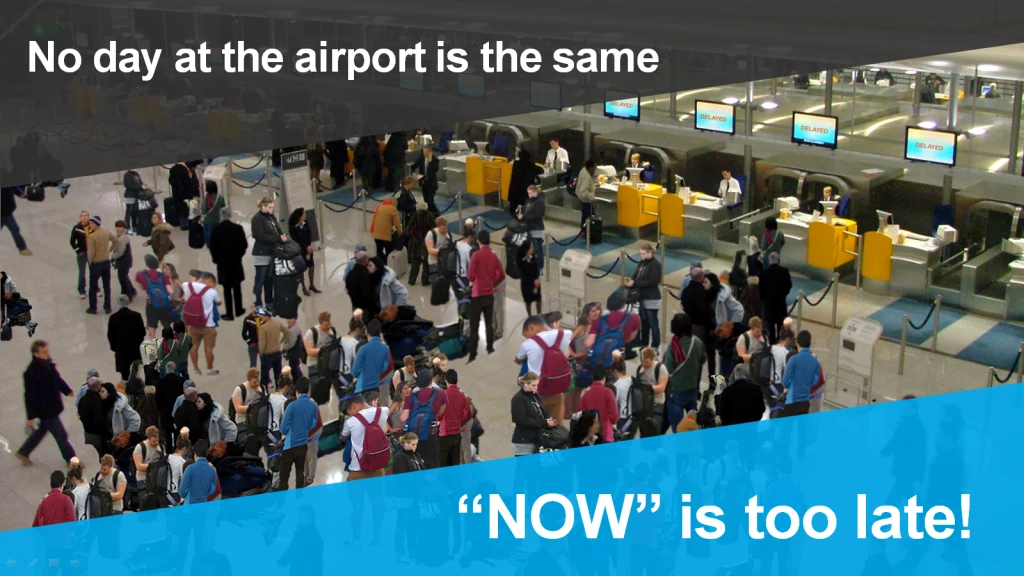In the high-tech manufacturing industry it is quite normal to measure every tiny little step a product is in process. Every machine, sensor, system is sending data which can be used to analyze and optimize the current production process.
As airports are like big factories with different process steps and stakeholders the aim is still the same, to get data about those activities. In some cases like baggage handling systems this works quite well, others face a severe problem: the human factor. Most of the landside processes are driven by passengers using infrastructure and services. They don´t act like pieces on an assembly line which is good for the individual, but bad for airport operators that have to deal with.
According to the statement “You can´t handle what you don´t measure” there is for some years now the trend to implement measurement solutions on airports to gain more and more data about these process steps and support terminal operation processes.
Looking at the available techniques and the costs of implementation, it is necessary to have a look at detailed use cases, to decide what and where to install. The bandwidth of technologies vary from WiFi passenger tracking, camera-based people counting to thermal sensors and so on…
Comparing all those available technologies most managers will decide for the solution with the highest business value with respect to the supplied use cases. One fact is always stated wrong I would like to point out:
You can´t use them for operations!
But let´s first have a look on the beneficial side of passenger counting and tracking.
Business Intelligence
First of all there is a definite value in gaining data of the landside process steps in order to enrich the analytic opportunities. Combining this with your already existing data allows business analytics to get a bigger picture of dependencies especially between airside and landside processes. As a result, planning departments are able to work more in collaboration, understanding more clearly the effects of the various changes for the whole system.
Quality Management
Measuring the overall performance of airports with a lot of KPI´s reflecting different process responsibilities, these data are essential for QM. Measured or calculated KPI´s like waiting times, dwell times, throughput are standard parameters for the performance and quality of landside processes at Airports. They are getting even more important as retail claimed to be the most significant profit contributor for bigger airports. Every minute lost in a queue means a loss of revenue to retail and subsequently a loss of profit for airports.
Improving daily operations
Another aim of measurement technologies is to help airport / terminal operations to improve their daily business. This can work by learning from past experiences how deviations influenced operational processes. This is quite comparable to the business intelligence aspect in order to optimize the passenger process by analyzing historical data. As every day is a bit different, this gets soon very complex and does only slightly help operational people in their daily business.
However, measurement technologies can only show what is happening now – but then it is already too late.

If airport operations want to work in a preventive mode, they must act pro-actively to manage changes before disruptions even happen. This requires another technical approach.
Ideally terminal operation managers should work with forecasted passenger demand to have time for scenario decision making and stakeholder communication. The measured data is then just the quality assurance of these forecasts.

Amorph.aero
The specialty of an agent-based solution to prepare this forecast is the flexibility to integrate every relevant parameter according to real passenger behavior. This capability allows to forecast also waiting times, dwell times and connectivity, something which is not possible just with mathematical optimization.
Amorph Systems is currently the only provider of such a fast agent-based solution, able to run a whole operational day under one minute. The high quality of these outputs ensure that operational managers have always the best data available to create a great passenger experience – and that´s all that matters at the end.
–